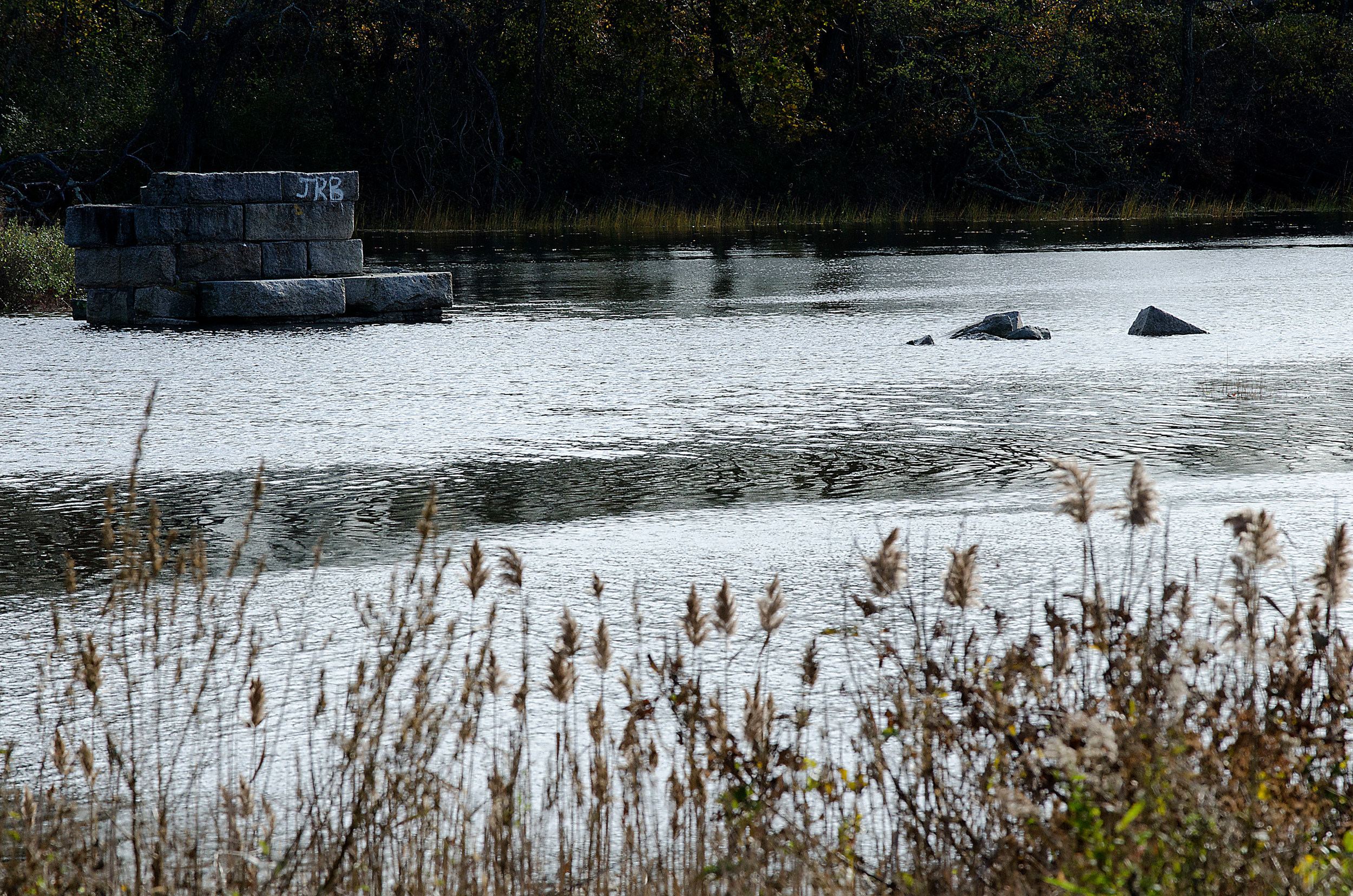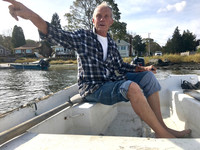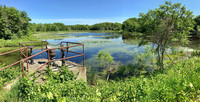Kickemuit River is 'dead as a doornail'
Kickemuit River has been stressed for decades, but a scientist says removing nearby dams may help
Back when Ralph Larson was a boy, the Kickemuit River was a fisherman’s paradise. Its banks were fringed with eel grass and rockweed, and it wasn’t hard to go out on the water for a few …
This item is available in full to subscribers.
Please log in to continue |
Register to post eventsIf you'd like to post an event to our calendar, you can create a free account by clicking here. Note that free accounts do not have access to our subscriber-only content. |
Day pass subscribers
Are you a day pass subscriber who needs to log in? Click here to continue.
Kickemuit River is 'dead as a doornail'
Kickemuit River has been stressed for decades, but a scientist says removing nearby dams may help
Back when Ralph Larson was a boy, the Kickemuit River was a fisherman’s paradise. Its banks were fringed with eel grass and rockweed, and it wasn’t hard to go out on the water for a few hours and come home with buckets full of bay scallops, quahogs, eels, oysters and enough blue crabs and squeteague for a party. Life was everywhere, and the river was packed with quahoggers who happily shared the space with dozens of kids who spent their summers sailing and swimming.
“It was heaven,” said Mr. Larson, now 80, who grew up just south of the Warren-Bristol border, off Fatima Drive. “This was a great place to grow up.”
Today, the thick quahog beds on the Kicky’s western shore are all but gone. The scallops left decades ago, and the flatfish he once caught in abundance are gone too. Where there was once a firm sandy bottom there is now just deep, thick muck along the river’s mid and upper stretches.
“It’s dead as a doornail,” he said. “There’s nothing left. It’s a shame, it used to be so healthy.”
Mr. Larson, who grew up on the Kickemuit and still dives, hauls boats and tends to moorings along the river, isn’t alone. As the Bristol County Water Authority and Save The Bay work toward a plan to remove one or both of the old dams that enclose the Kickemuit Reservoir north of Child Street, Mr. Larson and some others bemoan the effect of runoff from Metacom Avenue and neighborhoods to the west of the river, and wonder how the bridge work will change the river’s ecology.
In recent weeks, the Kickemuit River Council’s Ann Morrill has spoken out against the BCWA’s plan to remove the bridges, saying the influx of muck their removal could create could further exacerbate the problem. But a scientist involved in the project believes the fears may be misplaced. While saying there is much the project won’t do to bring the river back to what it was like in Mr. Larson’s youth, Save The Bay Riverkeeper Rachel Calabro said the work, which is currently in its early planning stages, will certainly help:
With the bridges there, she said, “you aren’t getting the amount of flushing that you would get if the river were running free.”
If the upper and later, the lower dam on Child Street were removed as part of the BCWA’s long term plan, the muck that has accumulated behind them would likely be removed first, she noted. From there, the natural exchange of water north and south with the tides would move sediment, she admitted, but it would be a natural flow that would help the river long-term:
The upper dam on Schoolhouse Road “has actually blocked sediment for all these years, and so it has prevented sediment from coming downstream. So you aren’t getting the flushing that you would get if the river were running free. It would be good and healthy for the entire system to be better flushed,” she said last week.
What about runoff?
When Mr. Larson was a boy, his father (whose name is memorialized in Bristol’s Larson Court) owned 72 house lots along the river. Over the years, as lots were sold off and development along Metacom Avenue and the Laurel Park neighborhoods increased, the amount of impervious surface — driveways, streets and the like — grew and contributed to what Mr. Larson believes is the river’s main issue: Runoff.
Over the years he’s seen the muck along the western shore grow steadily, a telling clue as he doesn’t see the same issues on the eastern shore, along Touisset’s largely undeveloped banks.
Ms. Calabro agrees that sedimentation and pollution from runoff to the west havehad big impacts. And while she said the bridge projects won’t directly target those runoff issues, they will help the river resist degradation through the flushing of sediment and the rebuilding of healthy marsh.
The hill along the western Kicky “is very steep,” she said. “The storm water comes down off those neighborhoods at quite a clip. Whatever fringing marsh is down there is starting to deteriorate. The other (Touisset) side is not so steep and there’s much more of a buffer. So you see the health of the river where there’s a good buffer and healthy habitats and everything is still intact, versus the other side where there’s been a lot of development, where there are bluffs, where there are streets that come down and dead end at the river.”
“It shows you that buffers are important,” she said. “If both dams were removed, over time sand and other sediment would wash down from the upper watershed. Because it hasn’t been happening for all these years, the salt marshes are succumbing. That sediment is super important for marshes to keep their elevation. So you’re starving (marshes) of the sediments they need but yet you’re getting all this runoff. You’re eroding them but starving them of sediment that would have come downstream and kept the marsh happy.”
What’s next?
At this point, the BCWA dam removal project is being studied jointly by the water authority, Save The Bay and the Town of Warren. The partners have put together a task force and are also working with the state DOT to assess what to do about Schoolhouse Road, which would have to be modified if the upper dam were removed.
Though he doesn’t know if he’ll live to see the river return to its old health, Mr. Larson said he hopes those looking at it can have a real impact.
“It was paradise,” he said. “Everyone had eel pots in their yards, everyone spent time on the water and in it. Now everything’s gone and it’s not the same. It’s hard to see.”











